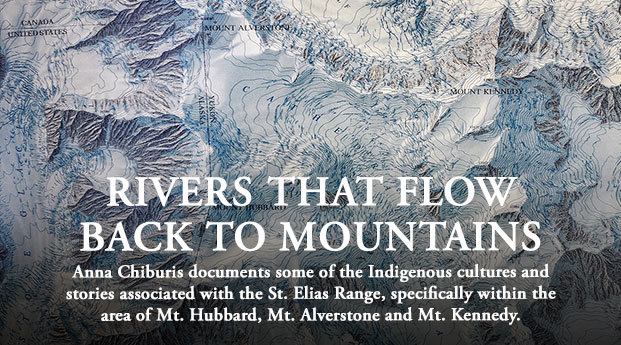Unparallel Up Lace: A new company presents a new take on a familiar shoe
Chris Kalman checks out a little-known shoe company named Unparallel that makes climbing shoes eerily similar to the well-known designs made by Five Ten. He found that even Unparallel’s proprietary rubber is similar to the famous Stealth C4 rubber that Kalman has loved for many years. The fit and sizing of the Up Lace felt slightly different to him compared to the Anasazi, however. Four stars.
![The Unparallel Up Lace resemble the well-known Five Ten Anasazi Lace in design and performance. [Photo] Chris Kalman](https://dev.alpinist.com/wp-content/uploads/2023/09/unparallel-up-lace-1-2-930x620.jpg)
![Phil Powers at an American Alpine Club Benefit Dinner with Doug Walker, a former president of the AAC who died in an avalanche in 2016. [Photo] Jim Aikman](https://dev.alpinist.com/wp-content/uploads/2023/09/phil-powers-1-930x620.jpg)

![The Pugilist at Rest (5.10 A3 M5) follows the long center rib in the middle of the photo. The Wilford Couloir is the gully just to the left. [Photo] Mark Wilford](https://dev.alpinist.com/wp-content/uploads/2023/09/pugilist-1-930x620.jpg)
![Jack Tackle on Pitch 11 of A Pair of Jacks/Arctic Discipline, Mt. Kennedy. [Photo] Jack Roberts](https://dev.alpinist.com/wp-content/uploads/2023/09/arctic-discipline-1-930x620.jpg)
![The author linking moves on Magnetar (5.13d) at Rifle Mountain Park, Colorado, last May. [Photo] Karissa Frye](https://dev.alpinist.com/wp-content/uploads/2023/09/lowa-rocket-1-2-930x620.jpeg)
![Wendy Teichmann, Andrea Rankin, Gertrude Smith and Helen Butling assemble at camp as they prepare for an attempt on the unclimbed Mt. Saskatchewan in 1967. [Photo] Courtesy Andrea Rankin](https://dev.alpinist.com/wp-content/uploads/2023/09/mt-saskatchewan-1-930x620.jpg)
![The north buttress of Mt. Kennedy as seen during the 1935 National Geographic Society Yukon Expedition. At the time, Bob Bates wrote that he hoped the peak would be called Mt. Washburn. It was known as East Hubbard until it was renamed for President Kennedy in 1965. In his years as director of the Boston Museum of Science, Washburn hung an enlarged version of this photograph on his office wall. [Photo] Bradford Washburn, Bradford Washburn collection, Museum of Science](https://dev.alpinist.com/wp-content/uploads/2023/09/a67-mpessay-rivers-flow-back-1-930x620.jpg)
![The Lines Between. Watercolor on paper. Selkirk Mountains, British Columbia. [Artwork] Claire Giordano](https://dev.alpinist.com/wp-content/uploads/2023/09/giordano-1-930x620.jpg)
![This photograph of the Himalaya was taken from the International Space Station in 2004. Visible from left to right are: Makalu, Chomolungma (Everest), Lhotse and Cho Oyu. [Photo] Courtesy of NASA, Wikimedia](https://dev.alpinist.com/wp-content/uploads/2023/09/himalaya-space-station-930x620.jpg)